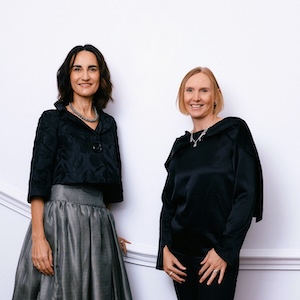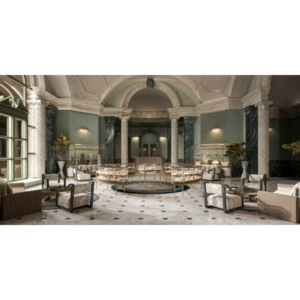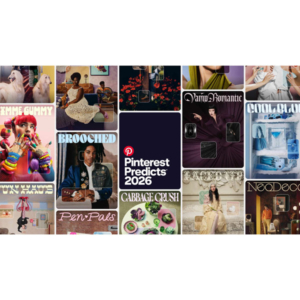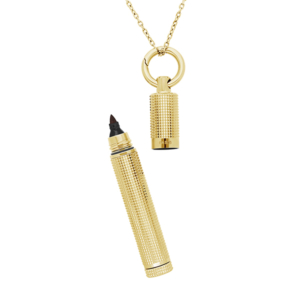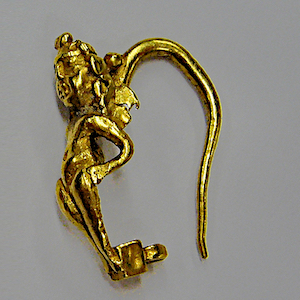
As a celebrated jewelry historian, Dr. Jack Ogden gets to see some of the most impressive pieces in the world. But lately, he’s been spending much of his time looking at equally impressive fakes.
When people think of counterfeit jewelry, they usually picture fake watches or Chinese knockoffs, like the haul recently seized by U.S. Customs and Border Protection agents in Louisville, Ky.
But Ogden, the founder and current president of the Society of Jewellery Historians, estimates that about half the “antique” gold jewelry on the market is actually fake. And while he’s able to catch most of it, he also suspects that well-crafted knockoffs have landed at auction houses, in high-end collections, and even in museums. Ogden has seen items that purportedly came from ancient Greece, Rome, and the Byzantine Empire; if one person made it, chances are, another has faked it.
“It’s a huge business,” he says. “Some of these items fetch hundreds and thousands of pounds. In the last 20 years, it’s grown exponentially. You figure they use maybe £20,000 in raw materials, and they get maybe £200,000 on the other end.”
The quality of the fakes varies wildly, he says. “I’ve seen some idiotic things. But some real nice ones.”
Why has the fake market boomed? For one, the antique jewelry market is hot, and where there’s money, there’s usually thievery.
In a recent New York Times story on the antique segment’s growing popularity, the newspaper noted that collectors enjoy the idea of wearing pieces that were individually fashioned by craftsmen long ago.
So, it’s a bitter irony that some of those “antique” pieces may in fact have been mass-produced relatively recently by 3D printers, which have become the counterfeiters’ favorite tool, Ogden says.
Another problem: Museums have cut back on staff experts, which makes it easy for well-designed dupes to slip through.
In fact, Ogden admits that, even though he’s a noted authority who authenticates for museums, he’s likely been fooled too.
“I reckon I pick out about 90%,” he says. “Some of the really good ones are almost impossible to tell from the originals. They are done by incredible craftsmen. [The forgers] know the materials, they know what technology to use. They can easily research all this information online.”
The traditional way to determine a piece’s authenticity has been to look for evidence of provenance, including supporting documentation. But that can be doctored, too. Ogden has heard of criminal rings—which are generally believed to be based in Eastern Europe—buying old typewriters on eBay, as well as old paper, to create realistic-looking provenance documents.
So, over the years, he’s developed a few fake-spotting tricks. For instance, when a lot of examples of a specific item from a certain period appear on the market, that’s generally a sign that something’s afoot.
“Fakes hunt in packs,” he says. “Once they set up a laboratory, [the counterfeiters] won’t do just one fake, they’ll do a bunch. So you look for certain idiosyncrasies. You see one thing, and then you all of a sudden see a bunch more by the same hand.”
Of course, even when a fake is spotted, it isn’t easy to catch the perpetrator.
“It’s very tricky, legally. The dealer will say he didn’t know it was fake, and it’s hard to prove he didn’t. It becomes very hard to track these people down.”
So how do people protect themselves? Ogden says there is no easy way, other than to buy from reputable people, and make sure items you buy have been inspected by experts.
“No one has really set up a gem lab to do ancient jewelry. It’s a difficult subject. People will say the style is right, it must be genuine. But you have to do analysis, you have to do microscopic study.”
Otherwise, as he told Antiqvvs magazine, “Openly recognize that much of the ancient art on the market or displayed in a public or private collection is there on the basis of one or more opinions that [it is] genuine. An opinion is just an educated guess. As the quote says, ‘Assume nothing, question everything.’”
“For the inexpert buyer,” he continued, “the wise advice is probably still what the Italian antiquarian Ricardo Nobili said almost exactly a century ago—buy old jewelry as if it were modern and be pleasantly surprised if it turns out to be old.”
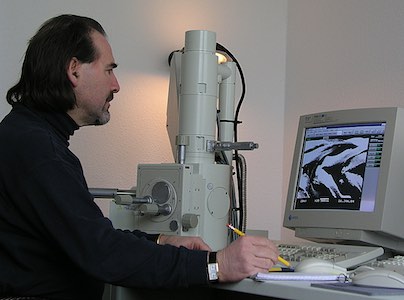
Ogden mostly deals with the very high end of the market, but there’s also an issue with lower-priced items, especially on online platforms like eBay.
Becky Stone, who blogs at Diamonds in the Library, recently wrote up 11 tips to avoid getting stuck with fakes. She recommends doing research, investigating sellers, making sure there’s a return policy, and asking questions.
“If a seller says they’re offering a rare 9 karat gold French mourning ring that an earl’s daughter wore in memory of her father in the late 1700s, that person should be able to explain the facts behind that description. How do they know it’s French?… How do they know who wore it? How did they date it?”
“If someone is going to offer rare, expensive antiques for sale,” she continued, “they should be able to explain to any buyer how they evaluate their merchandise. If a seller won’t take the time to answer your questions or can’t provide satisfactory answers, they don’t deserve your trust (or your money).”
This issue isn’t limited to ancient jewelry: Recently, experts accused the State Hermitage Museum in St. Petersburg, Russia, of exhibiting fake Fabergé eggs. Forgery has also long been a problem in the art world.
The fake jewelry problem hasn’t been quite as well publicized, but make no mistake: It’s real.
“It’s a cat and mouse game,” says Ogden. “I’m learning all the time.”
Top: A fake earring in the Hellenistic Greek style (images courtesy of Jack Ogden)
- Subscribe to the JCK News Daily
- Subscribe to the JCK Special Report
- Follow JCK on Instagram: @jckmagazine
- Follow JCK on X: @jckmagazine
- Follow JCK on Facebook: @jckmagazine

